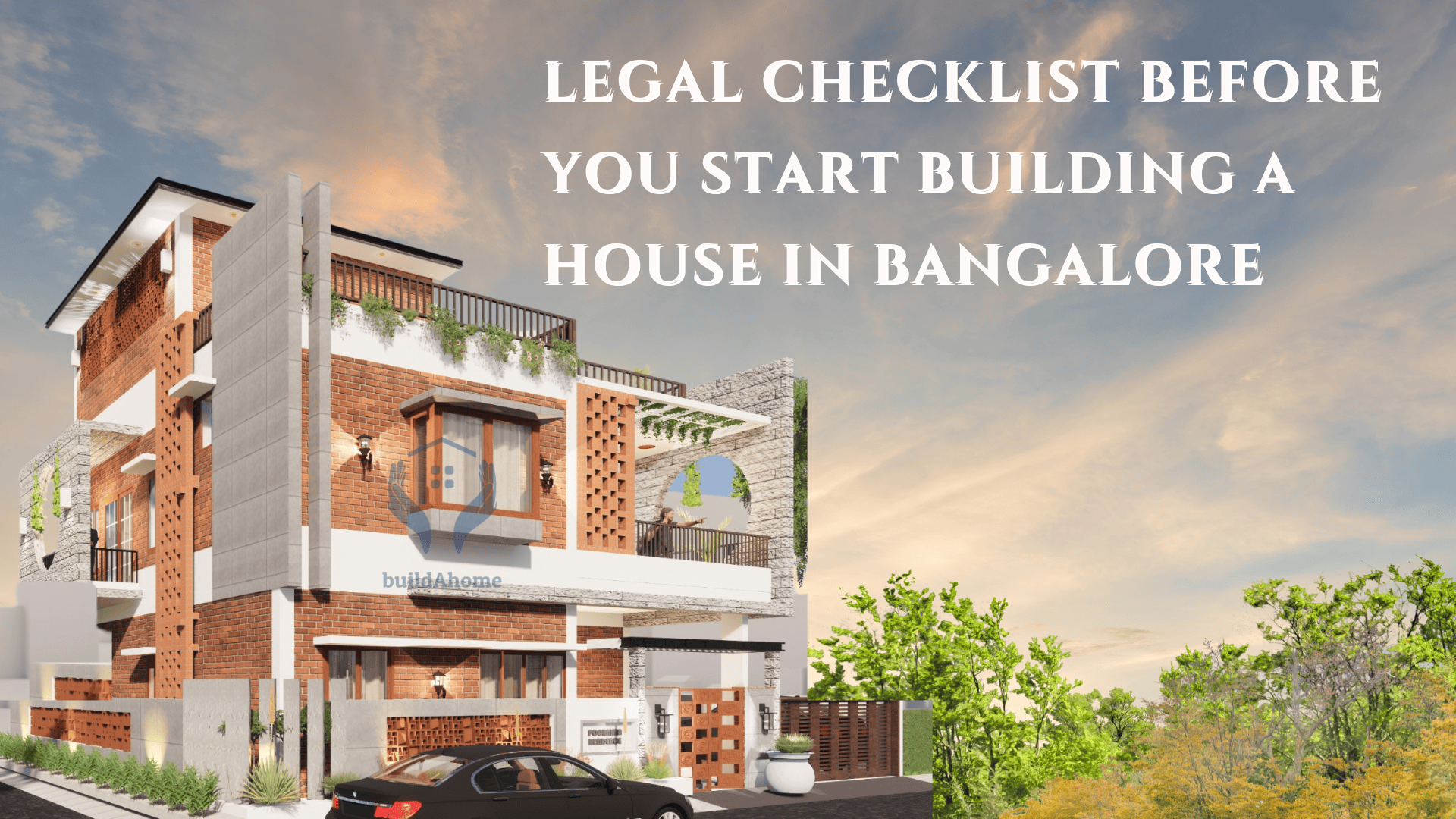Building a home in Bangalore is an exciting milestone — but it also comes with a maze of legalities that can easily be overlooked. A small oversight at the beginning can cause major setbacks later, from approval delays to unexpected penalties.
At buildAhome, we often meet homeowners who begin construction with incomplete documents or outdated approvals. So, here’s a carefully curated legal checklist — updated with the latest rules and some lesser-known insights — to help you start your construction journey on the right note.
1. Start with Property Title and E-Khata
Before anything else, ensure that your property title is clear, marketable, and undisputed. A simple sale deed is not enough — you should verify the following:
- Encumbrance Certificate (EC): Should be clean for at least 30 years.
- Mutation Record: Confirms ownership is transferred in BBMP/BDA records.
- E-Khata: From July 2025, BBMP’s e-Khata integration is mandatory for online plan approvals. Without this digital record, your plan application may not even proceed.
Many landowners still hold manual Khata certificates — these must be updated to the e-Khata format through the BBMP portal.
2. Check Zoning and Land Use Conversion (DC Conversion)
Even within Bangalore city limits, several plots are still recorded as agricultural land. You must confirm DC Conversion (Non-Agricultural Conversion) has been approved by the Deputy Commissioner.
Also, verify that the land use category matches your intended construction (Residential, Commercial, or Mixed-use) according to the Revised Master Plan (RMP-2031). The zoning map on the BDA or BMRDA website will help you confirm this.
3. Building Plan Sanction and the “Nambike Nakshe” Advantage
All building plans must be sanctioned by BBMP, BDA, or BMRDA — depending on your jurisdiction. Recently, BBMP introduced a digital initiative called “Nambike Nakshe”, which allows architects and engineers registered with the council to self-certify and get provisional approvals for smaller residential projects (up to 50×80 plots).
This can save weeks in the approval process, provided your architect follows the digital submission standards and setback rules precisely.
4. Floor Area Ratio (FAR) and Premium FAR
FAR determines how much you can build on your land. For instance, in a 30×40 site, the typical FAR in a residential zone is 1.75–2.25 depending on road width.
What’s less known is that BBMP allows you to purchase “Premium FAR” — an additional allowable area — in select zones. However, this can only be availed before plan approval and must be reflected in your sanctioned plan. Ignoring this step later could invalidate your Occupancy Certificate (OC).
5. Structural and Stability Certifications
BBMP and BDA now require soil test reports and structural stability certificates even before granting final plan sanction. These documents ensure your building design aligns with soil conditions — particularly important in areas like Sarjapur, Yelahanka, and parts of Whitefield where soil profiles vary drastically.
6. Building Completion and Occupancy Certificate (OC)
An Occupancy Certificate is the final approval confirming that your house complies with sanctioned plans and building standards. Without it:
- BESCOM or BWSSB may deny permanent connections.
- Property insurance or resale can face legal obstacles.
To obtain the OC smoothly, retain copies of all interim approvals, stability certificates, and construction-stage photographs.
7. Hidden Local Compliance Checks
Here are some local checks often missed by homeowners:
- Road widening notifications: Verify through BBMP’s Road Development Plan.
- Rainwater Harvesting and STP norms: Now compulsory even for certain single dwellings above 1200 sq.ft.
- Basement and setback encroachments: BBMP’s online systems flag minor deviations during OC processing.
Final Thoughts
A legally clear foundation is the most important part of your home — even before the first brick is laid. Ensuring proper documentation not only protects your investment but also adds long-term value to your property.



